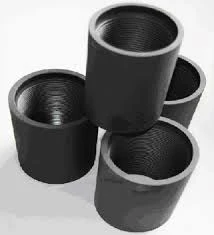- Afrikaans
- Albanian
- Amharic
- Arabic
- Armenian
- Azerbaijani
- Basque
- Belarusian
- Bengali
- Bosnian
- Bulgarian
- Catalan
- Cebuano
- Corsican
- Croatian
- Czech
- Danish
- Dutch
- English
- Esperanto
- Estonian
- Finnish
- French
- Frisian
- Galician
- Georgian
- German
- Greek
- Gujarati
- Haitian Creole
- hausa
- hawaiian
- Hebrew
- Hindi
- Miao
- Hungarian
- Icelandic
- igbo
- Indonesian
- irish
- Italian
- Japanese
- Javanese
- Kannada
- kazakh
- Khmer
- Rwandese
- Korean
- Kurdish
- Kyrgyz
- Lao
- Latin
- Latvian
- Lithuanian
- Luxembourgish
- Macedonian
- Malgashi
- Malay
- Malayalam
- Maltese
- Maori
- Marathi
- Mongolian
- Myanmar
- Nepali
- Norwegian
- Norwegian
- Occitan
- Pashto
- Persian
- Polish
- Portuguese
- Punjabi
- Romanian
- Russian
- Samoan
- Scottish Gaelic
- Serbian
- Sesotho
- Shona
- Sindhi
- Sinhala
- Slovak
- Slovenian
- Somali
- Spanish
- Sundanese
- Swahili
- Swedish
- Tagalog
- Tajik
- Tamil
- Tatar
- Telugu
- Thai
- Turkish
- Turkmen
- Ukrainian
- Urdu
- Uighur
- Uzbek
- Vietnamese
- Welsh
- Bantu
- Yiddish
- Yoruba
- Zulu
well tubing and casing
Understanding Well Tubing and Casing Key Components in Oil and Gas Production
In the oil and gas industry, the extraction of hydrocarbons from underground reservoirs involves complex processes and technologies. Among these, two critical components are well tubing and casing, which play essential roles in maintaining the integrity and efficiency of wells.
Well Casing
Well casing refers to the series of steel pipes installed in the drilled hole to provide structural support and isolation for the wellbore. Casing is essential for several reasons. First, it prevents the walls of the well from collapsing, which can occur naturally due to geological pressures. Second, it isolates the production zones from other subsurface layers, including fresh water aquifers, thereby protecting them from potential contamination. Finally, casing serves as a conduit for the production of oil and gas to the surface while facilitating various services, such as cementing and the injection of fluids.
The casing process begins with drilling the well to a predetermined depth. Once this is achieved, steel casing pipes are lowered into the well. Cement is then pumped into the annular space between the casing and the wellbore to secure the casing in place and provide additional protection against fluid migration. During operations, different casing types may be used, including conductor casing, surface casing, intermediate casing, and production casing, each designed for specific depths and conditions.
Well Tubing
well tubing and casing

While casing provides overall structural integrity, well tubing is generally smaller-diameter pipe inserted into the production casing. Its primary function is to allow for the extraction of oil and gas from the reservoir to the surface. Tubing must endure high-pressure and high-temperature conditions, as well as corrosive environments, making material selection critical. Common materials for tubing include carbon steel and special alloys designed to resist corrosion and wear.
The installation of tubing occurs after the completion of the casing. Once the well is ready for production, the tubing is run into the well and is often equipped with various components like pumps, valves, and seals to enhance productivity and control.
Integration and Maintenance
The synergy between casing and tubing is vital for the efficient extraction of hydrocarbons. Together, they ensure that the well remains functional and safe throughout its operational life. Regular maintenance and monitoring are essential to detect potential issues such as leaks, corrosion, or blockages. Advanced technologies, such as downhole monitoring systems and non-destructive testing methods, have become integral in evaluating the condition of both casing and tubing.
In conclusion, well tubing and casing are foundational elements in the oil and gas industry. Their design, installation, and maintenance are crucial for successful well operations, ensuring that hydrocarbons can be produced safely and efficiently while protecting the surrounding environment. Understanding their functions provides valuable insight into the complexities of oil and gas extraction and the importance of adhering to industry standards and best practices.
-
Tubing Pup Joints: Essential Components for Oil and Gas OperationsNewsJul.10,2025
-
Pup Joints: Essential Components for Reliable Drilling OperationsNewsJul.10,2025
-
Pipe Couplings: Connecting Your World EfficientlyNewsJul.10,2025
-
Mastering Oilfield Operations with Quality Tubing and CasingNewsJul.10,2025
-
High-Quality Casing Couplings for Every NeedNewsJul.10,2025
-
Boost Your Drilling Efficiency with Premium Crossover Tools & Seating NipplesNewsJul.10,2025







